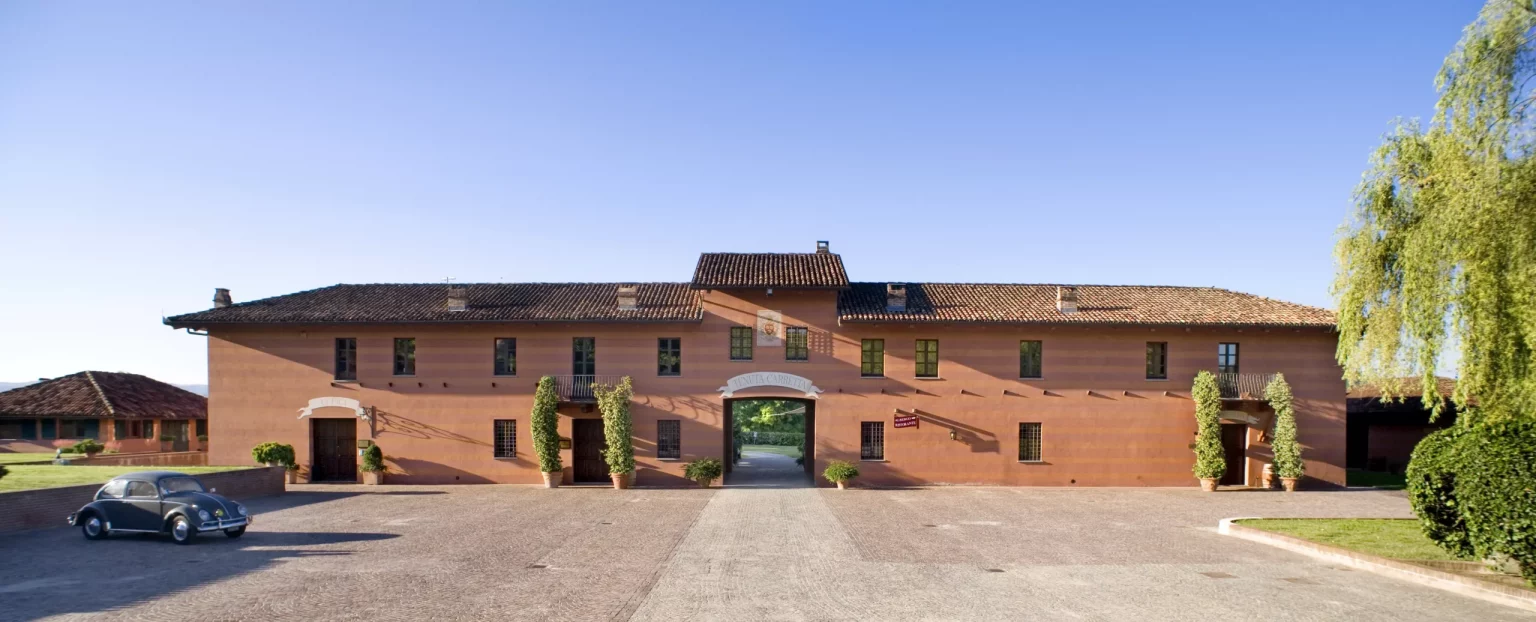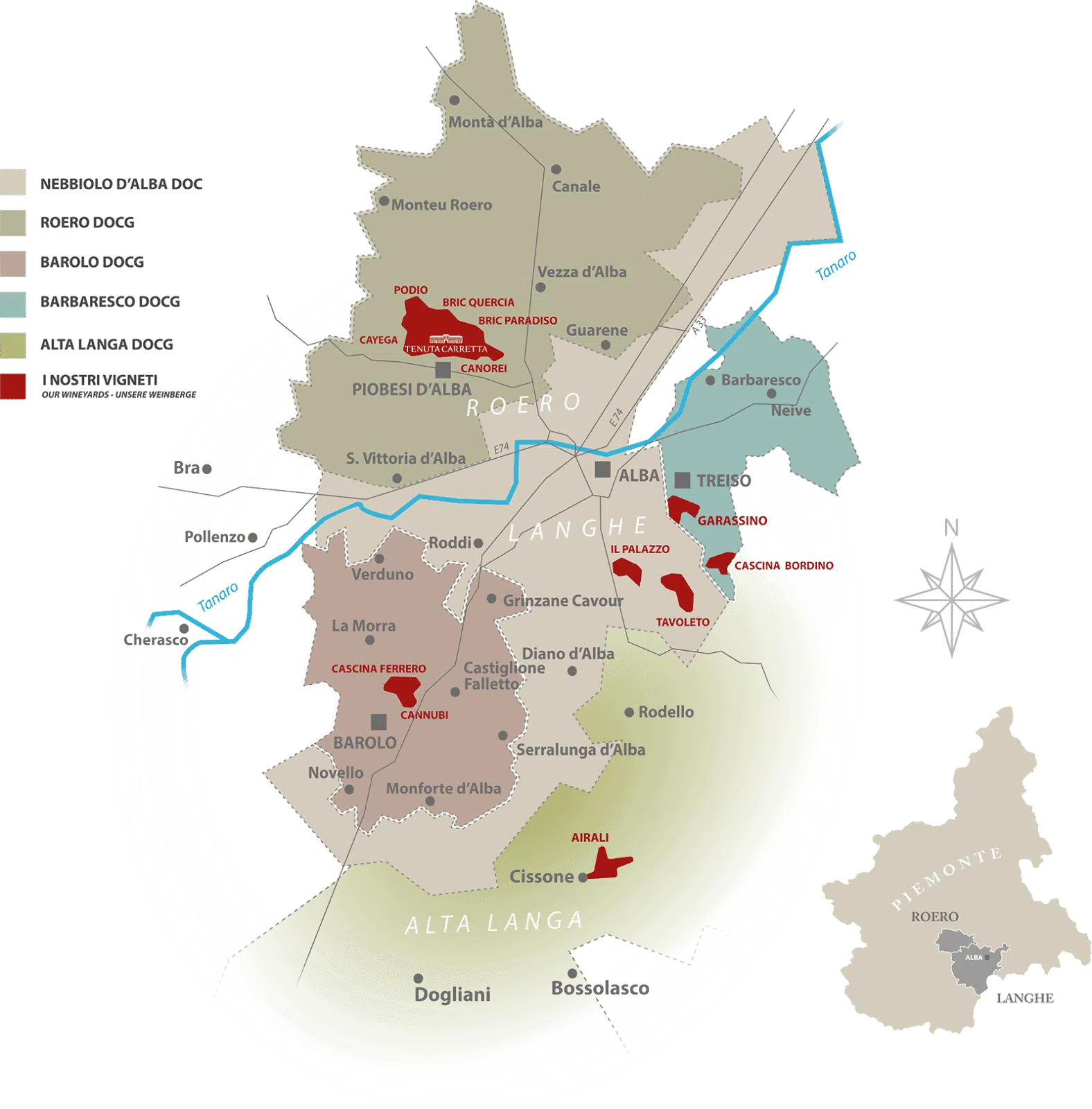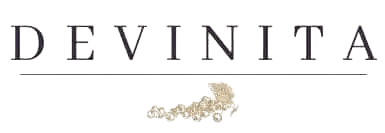Tenuta Carretta

Tenuta Carretta
About the winery
Tenuta Carretta has been around for more than 550 years and is located in southern Piedmont, in Piobesi d'Alba, in Roero. It is a winery with a rich story, one of the most historic Italian wineries where past, present and future are integrated in the best way.
But Tenuta Carretta is above all a winery of people working together to achieve one common goal: to produce high-quality and important wines that are pleasant and enjoyable to drink.

DOMINA CARETA
Not so long ago, it was thought that the name "Carretta" was derived from the Celtic word "Car," meaning "stone." This would refer to a large chalk bench that still stands a short distance from the entrance to the estate. However, recent research in the medieval archives by historian Baldassare Molino has revealed the existence of an Albanian noblewoman (the "domina Careta"), who was a landowner in the municipality of Piobesi. Her surname (Constanzi) appears in a deed of sale of land in Piobesi d'Alba in 1353, found in the archives of the Counts of Roero di Guarene. The deed names her as the daughter of an Albese nobleman, Ruffino Capre, and the nobleman's widow, Manuele Constanzi, from whom she took her surname. Another deed, written two decades earlier in 1334, cites some "heirs of Careta Constanzi," presumably the grandmother of "domina" Carretta.
From these and other documented references, it seems clear that the estate took its name from the noblewoman who was its first owner.
THE CONTRACT
It is nothing more than a contract drawn up on November 28, 1467, by the notary Giorgio di Monteacuto (today's Monteu Roero) to be considered the true starting point of the estate's history. In it, the then owner, Andrea Damiano, lord of Piobesi, authorized the Porrini brothers - Corrado, Giacomino and Pietrino - to work and cultivate (and harvest) his land of "cassina Careta" for nine years.
It is a document of extraordinary value because of its wealth of detail. It even contains the obligations the peasants made for cultivation; as for the vines, they had to diligently "putare" (prune), "agonzare" (repair), "et scarzorare" (prune), in short, do everything that was necessary and appropriate according to custom. However, the grapes from the vines of the Podio hills were still the lord's property, without any impediment (salvo et reservato vites Podi Serre, de quibus sen nil impedire teneantur et debeant").


THE VINEYARD
The act concludes with a final declaration: while all harvested grapes are divided in half, those from the vines on the hill of Podio (Podium Serrae) are reserved for the lord, without any hindrance on the part of anyone ("salvo et reservato vites Podi Serrae, de quibus sen nil impedire teneantur et debeant"), it is a certificate of "ante litertam." Unique in the history of Piedmont, and perhaps Italy, of vineyard quality that to this day dominates over the vineyards of other wineries.
MIROGLIO
In 1811, after 350 years, ownership passed from the Marquis Damiano to the Count of Roero, who cultivated there for 120 years. In 1932, he donated the estate to the Veglia family from Turin. In 1985, the property finally passed to the Miroglio family from Alba, founders and owners of the textile group of the same name.


UNESCO
All of Tenuta Carretta's vineyards are part of the Langhe-Roero and Monferrato wine region, an area that was declared a UNESCO World Heritage Site in 2014 and today covers about 70 hectares. Tenuta Carretta is located in Piobesi d'Alba, Roero, a hilly area north of the city of Alba and on the left bank of the Tanaro River. This is where the headquarters are located, surrounded by just under 35 acres of vineyards. South of the river are the hills of the Langhe, where the remaining 35 hectares of vineyards are located, totaling 70 hectares.
